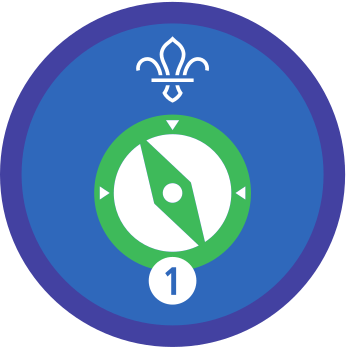Key in the code
You’ll need
- Coloured pens or pencils
- Sticky tape
- Sticky tack
- A map
- A copy of the asset for each team
Before you begin
- Stick copies of the places sheets to a wall. Space them out evenly, with enough space in between for the team to stand.
- Stick copies of the symbols sheets to the opposite wall, in line with the places sheets.
- Stick copies of the code sheets to the floor in middle of the room. There should be one code sheet in between each place and symbol sheet.
Practice your symbols
- Everyone should look at a large map. Can anyone say what any of the symbols on the map represent? The person leading the game should show everyone the key, and explain how it tells us what the symbols represent.
Play the game
- Split into three teams, and give each team a colouring pencil.
- Each team should stand in the middle of the room, next to their code sheet. Players cannot move any of the sheets at any point in the game.
- The first player in each team should run to the place names wall and find a name (and remember which box it is in). They should then run to the other end of the room, to find the symbol that represents that place. While the player is away from the code sheet, they can’t communicate with their team.
- The player should run back to the code sheet in the centre, and draw the symbol and write the place name in the correct box.
- Once the player reaches the code sheet, the next player can go. They should repeat steps three and four with a different place and symbol. Keep going until all of the symbols are on the code sheet. Teams might need to run more than once for some symbols, if someone couldn’t remember the name, the box, and the symbol.
- The first team to correctly complete the code sheet is the winner.
Reflection
This activity was a chance to be a team player. How did your team work together? Did different people have different roles? How did you take it in turns to run? How did you communicate with your team at the base? Did you make a plan together, or did everyone do their own thing? What would you do differently if you played again?
This activity was also a great chance to develop a range of skills. Why is it useful to understand how a map key works? Do you use any other maps that have symbols (for example, a map of a place like a museum, online maps like Google Maps)? When else might we get information from a key (for example, looking at a menu with allergen symbols)? Would you change any of the symbols on the map in this activity? Memory is also a skill – how did you remember as much as possible? Which things were trickiest to remember?
Safety
All activities must be safely managed. You must complete a thorough risk assessment and take appropriate steps to reduce risk. Use the safety checklist to help you plan and risk assess your activity. Always get approval for the activity, and have suitable supervision and an InTouch process.
Change the places to suit you – you might want to have fewer or more places, or to choose ones with simpler or trickier symbols to draw.
If teams are struggling, you could let them take the code sheet to one (or both) of the walls.
You could change the rules so two people can run at once, as long as they stay together as a pair.
You don't have to run around, if it doesn’t work for everyone. People could walk, or sit with all of the sheets in front of them and race to complete the code. You could also nominate some people as ‘runners’, and some as ‘artists’ – the runners must describe what they find to the artists.
All Scout activities should be inclusive and accessible.
Once you’ve played with ‘real’ symbols, each team could get creative and design some custom symbols for things near you – is there a symbol for Scout meeting place? How about that really fun tourist attraction, or the big tree in the park? Play again, with each team hunting and copying another’s custom symbols. This could be a useful way to prepare for requirement four of stage two of the Navigator Staged Activity Badge.

